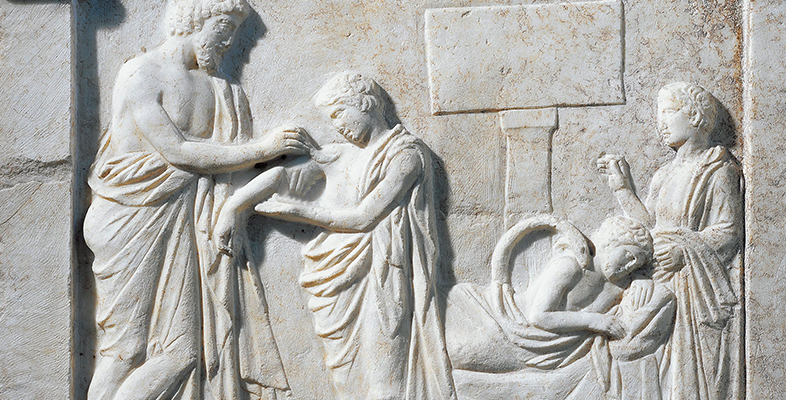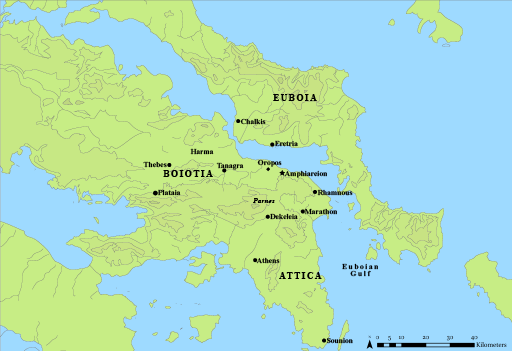4.1 The politics of Amphiaraos’ sanctuary: literary evidence
You will now consider Amphiaraos’ worship from the perspective of polis-religion by exploring how politics was tied to religion, and in particular, how communities sought to align themselves with Amphiaraos’ cult worship to express political values. A good place to start when thinking about the political dimensions of Amphiaraos’ cult practice is the literary evidence (this means pieces of writing of different genres, such as histories and plays, which have come down to us from the ancient world). Although you learned in the Introductory Guide that literary evidence in fact says very little about Oropos and the Amphiareion, it offers some indication about the political importance of both. Such information in turn helps us interpret the sanctuary’s material remains and look for clues about the political significance of Amphiaraos’ cult worship.
Activity 8
An important ancient author to examine is Pausanias, an ancient Greek writer interested in geography who lived in the second century CE. Pausanias travelled to lots of different Greek cities and wrote his Description of Greece based on his travels. One of the places Pausanias visited was Oropos and its sanctuary of Amphiaraos. His account provides us with one of the most detailed literary descriptions of the city and sanctuary which survives from the ancient world.
Read the following passage in English translation taken from Pausanias’ Description of Greece in which he describes the communities interested in Oropos and the mythological tradition of Amphiaraos.
- As you read, make a list of the places that Pausanias mentions and locate them on Map 3 below.
Then re-read the passage, answering the following questions:
- Which two regions, according to Pausanias, controlled Oropos at different times?
- In what place or places was Amphiaraos’ chariot said to have disappeared into the earth?
(Note that in the first passage, Pausanias mentions King Philip II of Macedon (the father of Alexander the Great) who became the dominant power in the ancient Greek world in the mid fourth century BCE. Following the victory of his forces at the decisive Battle of Chaironeia in 338 BCE, most Greek states that had previously resisted Philip (including Athens) came to terms with Macedon.)
Pausanias, Description of Greece (translation: A. Wilding)
1.34.1 ‘The land of Oropos lies between Attica and Tanagra. Originally, Oropos belonged to Boiotia but in our times in belongs to the Athenians [i.e. the inhabitants of Athens and Attica], who always fought for it but never had secure possession until Philip [of Macedon] gave it to them after taking Thebes.’
1.34.2: ‘It is said that the earth opened up to receive Amphiaraos together with his chariot when he took flight from Thebes, except they say it did not happen here but at a place called Harma [literally meaning ‘Chariot’] as one goes from Thebes to Chalkis. It is believed that Amphiaraos was first established as a god by the people of Oropos, and that later all the Greeks believed the same.’
Discussion
- Hopefully you were able to find the locations mentioned by Pausanias on the map.
- The regions of Attica and Boiotia, which surround Oropos, are the ones Pausanias mentions as controlling Oropos at different times: he says that the Athenians and Boiotians fought for possession of the land for most of its history.
- Pausanias mentions two places within the region of Boiotia – Thebes, and a village called Harma – in his account of the mythological tradition of the Amphiaraos. The passage arguably implies the existence of different traditions about where he was swallowed up by the earth, with this either happening as he was fleeing from Thebes or, alternatively, in the village of Harma (whose name means ‘chariot’ in ancient Greek).

